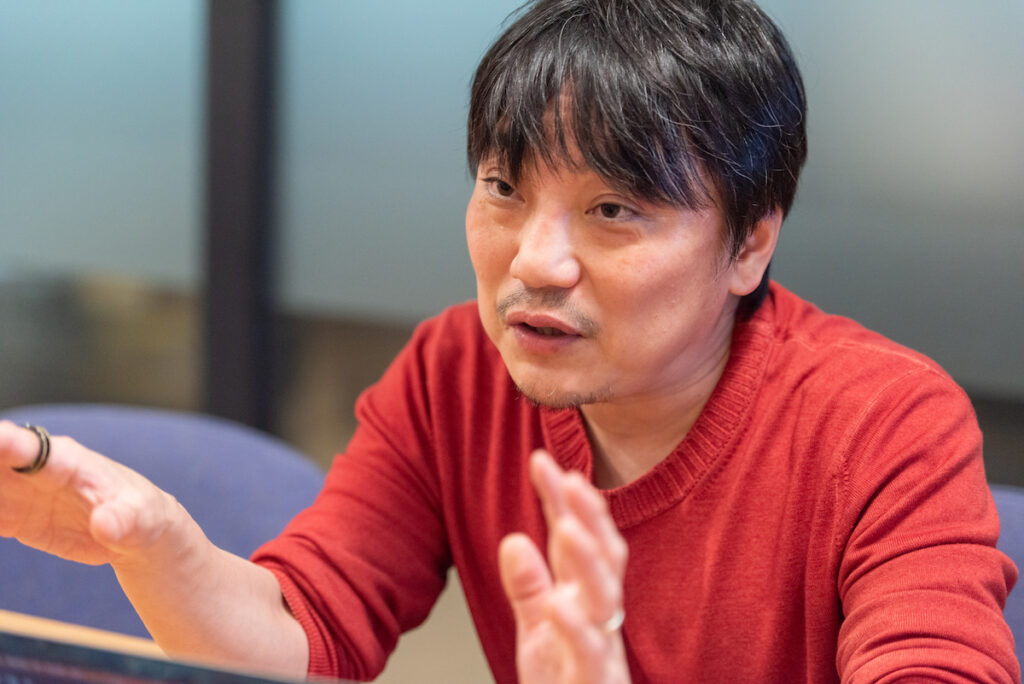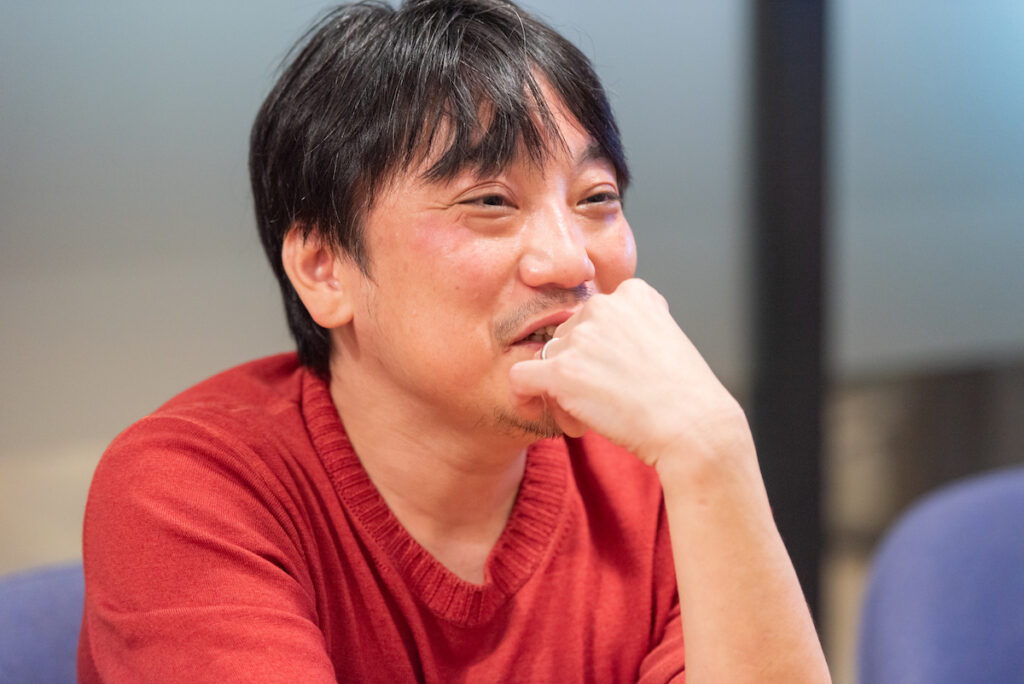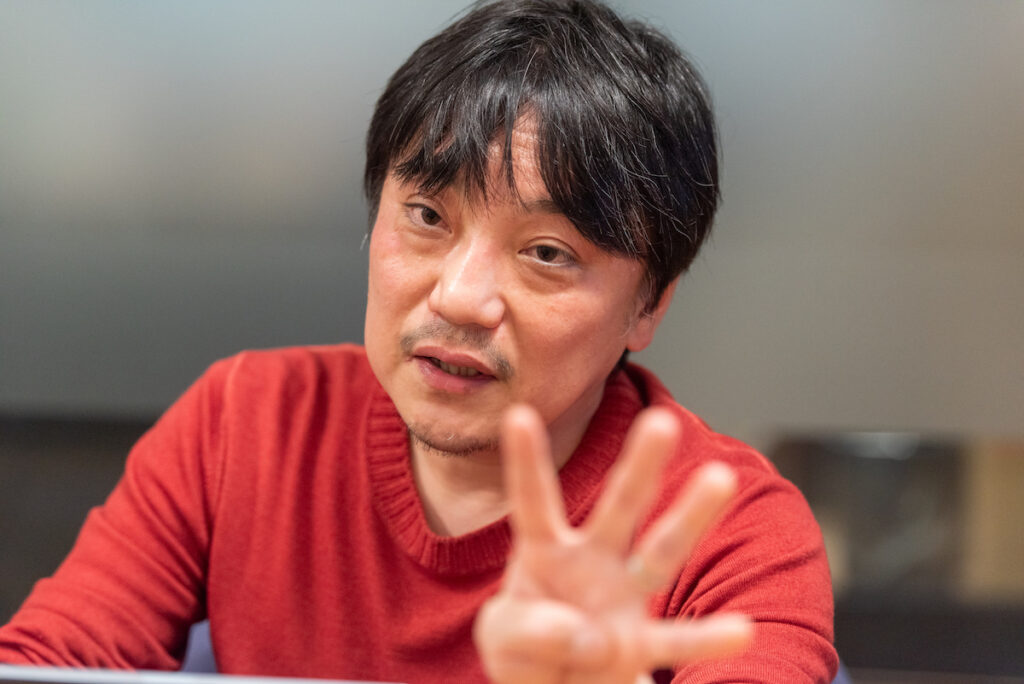
Many people are saying that the “crypto asset winter” has passed and spring is upon us. But there are different views on when winter ends and what 2024 will look like. How does Hironaka Kunimitsu, a Web3 startup manager and Web3 investor, view the current situation and 2024 from both perspectives? What does it mean to say, “There is an ironic sadness to this mass adaptation”? I asked Mr. Kunimitsu.
Complete conversion to full investment mode
──You are developing a wide range of businesses in the Web3 area. What kind of year was 2023?
Kunimitsu: We operate the VR game/metaverse Thirdverse, the Web3 game Mint Town, the next-generation crowdfunding Financier, and the Web3 Fund in the United States. He is unique in that he manages both a startup and provides funding to startups as a VC, and I think there are very few people like that.
From an investor’s perspective, I feel that sentiment has finally changed since December. Until November, Bitcoin prices were rising, but VCs, including overseas, were still very cautious. However, it seems that an increasing number of deals that have arrived in December suddenly become oversubscribed (a situation in which more investment is received than expected).
──Some people look back on 2023 as having a tailwind, but did the sentiment change in December?
Kunimitsu: Until then, only Bitcoin was rising. In 2023, Bitcoin was on its own, and altcoins including Ethereum, as well as grass coins and NFTs, had been stagnant for a long time, but things have started to move in the past month or two. Although it was only about Bitcoin, it seems like the enthusiasm has suddenly spread to other areas as well.
──In December, you posted on social media that you were “completely switching to full investment mode.”
Kunimitsu: We had been converting since November. In fact, in 2023, I did not hold down my investment that much. Over the past year, the environment has been so cold that even procurement has been difficult, but as the market environment improves, there is a FOMO (Fear of Missing Out) mood. .
Up until now, I have been able to take the time to do due diligence, but now I have decided on something else. That mode is gradually returning. From a startup’s point of view, a good investor is someone who can make decisions quickly and provide a large amount of money. If we don’t go into full investment mode, the amount of investment will quickly fill up and we are in a situation where we will not be able to raise funds.
──Do you have the impression that sentiment will change and things will accelerate further in 2024?
Kunimitsu: One thing is for certain: it will be a much bigger bubble than last time. This time, various investment mechanisms such as DeFi (decentralized finance) and derivatives are in place, and leverage is even more effective than last time. Up until now, it took a certain amount of time for Bitcoin to rise, followed by Ethereum, and then altcoins. However, this time, some altcoins have already risen significantly. Last time, you could only trade derivatives with major stocks with large market capitalizations, but this time it’s different. There is a sense of excessive leverage, but in that sense I think the bubble will be even bigger than the previous one.
Furthermore, the big difference between last time and this time is the existence of a new source of inflow of funds into crypto assets, the existence of Bitcoin spot ETF (Exchange Traded Fund), which many people have already pointed out. If Bitcoin spot ETFs are approved in the United States, institutional investors such as life insurance and pension funds, who have previously been unable to invest in crypto assets, especially Bitcoin, will be able to invest in them. The amount of money flowing in will change completely. The stock market is 50 to 60 times larger than the crypto asset market.
According to recent research, the daily trading volume of the cryptocurrency market is now about half that of the stock market. The bubble in 2024 will be an unprecedented bubble, as liquidity is much larger than last time. Then the bubble bursts.
Ordinary people hold Bitcoin indirectly


–Bubbles and bubble bursts will cause great damage to crypto assets.
Kunimitsu: However, crypto assets constantly rise and fall, and in the long term, they tend to rise. This time there will be a big rise and a big fall, but I still think it will continue to rise.
──Some people say that the next “winter” will be much longer.
Kunimitsu:I think the cycle will become shorter and shorter. The reason is that the social implementation of crypto assets and blockchain is becoming a reality. Until now, there were almost no use cases in the real world, and it was a bubble based only on expected values. Once it collapsed, it could not recover until expectations returned again. This time, the number of real-world use cases is clearly increasing. It is supported by real demand. There is no doubt that more people will be using Web3 technology next year than this year, and the year after next, so I believe that the cycle of rise and fall in crypto assets will also become shorter.
This time, a killer use case for crypto assets and blockchain has been revealed. This is something that no one expected a year ago. Investors look for the next story, the narrative, when a bubble bursts. For example, in the first half of 2023, it was thought that real world assets (RWA: real assets), DeFi using derivatives, and games and layer 2-related things would be the focus of the next narrative.
But then the Bitcoin ETF and stablecoin narrative emerged. The first killer use case for blockchain is Bitcoin ETFs and stablecoins. The fact that Bitcoin ETFs are handled by traditional financial giants BlackRock and Fidelity means that most Americans will be indirectly investing in Bitcoin through life insurance or pension funds. Ordinary people hold Bitcoin indirectly.
Bitcoin was originally created with the intention of cross-border payments and remittances, but in the end it was not used for such purposes, but instead is used as “digital gold” and a store of value. In the future, ETFs will be created, major financial institutions will hold Bitcoin, and indirectly people all over the world will hold Bitcoin. In addition, stable coins are responsible for payments and remittances.
One thing I would like to point out is that some people who have been involved in crypto assets, blockchain, and Web3 for a long time view this mass adoption with mixed feelings. This is because the “decentralized dream” envisioned by Satoshi Nakamoto is gaining mass adoption through extremely centralized mechanisms such as ETFs and stable coins. I think Bitcoin maximists have this kind of ironic sadness.
Return to centralization


──Will the “decentralized dream” as envisioned by Satoshi Nakamoto come true?
Kunimitsu:This turn won’t be the turn where Decentralized’s dreams will come true. For example, games aren’t decentralized yet either. For games like Axie Infinity and STEPN, which have gained popularity as Play to Earn (P2E) games, and the games we work on, we manage and operate the servers ourselves. In the trading of crypto assets, traditional exchanges such as CeFi are still overwhelmingly more popular than DeFi (decentralized finance). Furthermore, DeFi will almost certainly require KYC (identity verification) in the future, and regulations will become more and more in place in each country. This turn is the turn where Centralized (centralized type) progresses.
However, once there was a shift back to centralization, an environment was created in which many people could participate safely and securely, user literacy increased, and UI/UX on the decentralized side also improved. As it evolves and becomes easier to use, I think the time will finally come for the “decentralized dream” pursued by Satoshi Nakamoto and those who followed him to become a reality. The expected halving is in April, but it will be around the time of the second halving, probably eight years from now. Hopefully, it will be in 4 to 8 years.
──So the hurdles are still high and we have a long way to go.
Kunimitsu: Even if everything is on-chain, it still costs money and scalability is an issue. Although it is steadily evolving, the basic technology that supports the core of the world does not evolve overnight. I think it will be solid in 4 to 8 years. It took 20 to 30 years for the Internet to become popular. ChatGPT has also been in development for 10 years since OpenAI started its development. The underlying technology is something that can only be used over time.
Cryptocurrency and blockchain are now being taken over by Wall Street from what was once the so-called “Wild Wild West” (the lawless region of the American Wild West). However, on the other hand, it can also be said that it has become less likely to be crushed. I think it’s a plus overall.
The next new innovation created by the bubble
──To narrow down the theme a little, how do you think Web3 games will develop in 2024?
Kunimitsu:The users who play the game and the people who trade the governance tokens are basically different. Therefore, it is important to create interesting games and increase the number of users, while at the same time appealing to investors and getting them to purchase governance tokens. This is the same thing as existing listed companies, and it is necessary to appeal to both parties.
The difference is in the narrative used to appeal to investors. For stocks of listed companies, indicators such as PER (Price Earnings Ratio) and PSR (Price Sales Ratio) are important, whereas Web3 games have a narrative about “why invest” and “what to invest in.” It becomes important. And the last popular narrative inevitably becomes outdated, and everyone becomes interested in new narratives. The last Web3 game had two narratives, one was Play to Earn and the other was Metaverse. What is the next narrative is important.
What we are currently envisioning is “AAA quality.” The goal is to release AAA quality Web3 games and attract many existing game fans to Web3 games. The other is “IP”. After all, IP is very easy to understand. It’s easy to understand that they already have tens of millions of fans around the world. The importance of IP has been said for some time, but this time I think it’s important to be able to appeal to investors who don’t play games.
──What do you think about game tokenomics?
Kunimitsu:Tokenomics is basically based on the “zero-sum” way of thinking. Traditional tokenomics is a Ponzi type, in other words, when new users come in, Play to Earn is established for existing users. If you can’t acquire new users, it’s over. This is not sustainable. From now on, tokens will be “zero-sum” and will be passed between users without an excessive increase in circulation. In other words, it is important to create a model that does not cause token inflation.
Furthermore, we believe that it is difficult to achieve just simple AAA quality or IP. This cannot be achieved without blockchain games, and the uniqueness of blockchain games is essential. That is “value transfer”. I think the winner will be the one that focuses on the transfer and exchange of value and is able to build a model that prevents token inflation.
The blockchain game “Captain Tsubasa -RIVALS-” that we are working on has been in service for about a year, but there are very few blockchain games around the world that have continued for more than a year without tokenomics collapsing. I do not think. We have evolved the game model while balancing the demand and supply of tokens.
When NFTs became popular, various IP holders in Japan took an active stance, but with the onset of winter, they all stopped. If we are successful, we believe that an atmosphere of “let’s try again” will be created. When looking at the global competition for Web3 games, it is sometimes said that the Japanese team is at a disadvantage when it comes to AAA quality alone, but when it comes to including IP, the chances for Japan become greater. Japan has many world-famous IPs, and there are as many opportunities as there are IPs.
──The bubble and its burst will be another test, but expectations are rising from 2024 onwards.
Kunimitsu: Unless there is a bubble, the situation will continue where only safe projects will receive funds. On the other hand, during a bubble, even somewhat unreasonable projects attract funding. Collecting funds also creates the next new innovation, leading to the creation of new players in the next turn. We hope that this bubble will lead to the long-awaited “realization of the decentralized dream” in four to eight years.


Hirohisa Kunimitsu
Joined AtMovie Co., Ltd. in May 2004. In the same year, he became a director, producing movies and TV dramas, and launching new businesses. In June 2007, he founded gumi Co., Ltd. and became president. He led the XR business and blockchain business, and became chairman and representative director in 2018. He retired from the company in July 2021 and became CEO of Thirdverse Co., Ltd. and Financier Co., Ltd. in August of the same year. Appointed as gumi cryptos capital managing partner from September 2021. In May 2023, he became the representative director and CEO of Mint Town Co., Ltd.
|Interview/Text: Takayuki Masuda
|Photo: Airi Okonogi
|Interview cooperation: Koki Mizuno
The post Bubbles and bubble bursts will make the “dream of decentralization” come true – Gumi founder Hironao Kunimitsu | CoinDesk JAPAN appeared first on Our Bitcoin News.

 1 year ago
109
1 year ago
109














 English (US) ·
English (US) ·